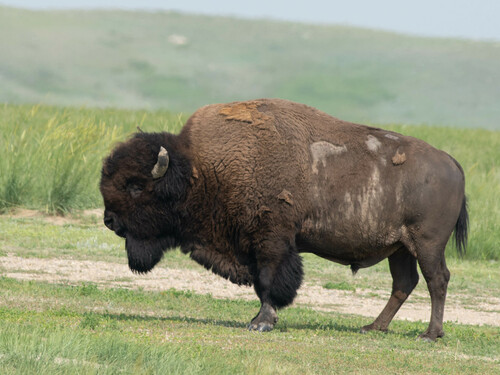
American bison
The majestic Bison bison roams North America's grasslands, their iconic hump and shaggy mane silhouetted against vast prairies. These gentle giants weigh up to 2,000 pounds and play a crucial ecological role by maintaining grassland health and supporting biodiversity.
15-20 years
Lifespan
1000.0 - 1300.0 kg
Weight
Length: 2.0 m
Size
Brown, Tan
Color
22 mph
Top Speed
Near Threatened
Conservation Status
Stable
Population Trend
Distribution Range of the American bison
Bison bison, commonly known as the American bison, is native to North America. Historically, its geographical distribution extended across much of the continent, from the Great Plains region of the United States and Canada to parts of Mexico.
American bison's Habitat
Environmental Conditions
American bison primarily inhabit open plains and prairies, though they can also be found in river valleys, forests, and plains with a mix of grasslands and woodlands. The typical climate in these areas includes cold winters and hot summers, with varying precipitation levels depending on the specific region.
Ecological Niche
As a keystone species, bison play a crucial role in their ecosystem by grazing on grasses, which helps maintain grassland health and biodiversity. They also contribute to the renewal of the soil by trampling and churning it, allowing for the growth of different plants. Bison are herbivorous and have adapted to digest a variety of grasses and sedges. In the ecosystem, they serve as prey for predators such as wolves and bears.
Copyright @ Nature Style Limited. All Rights Reserved.
 English
English